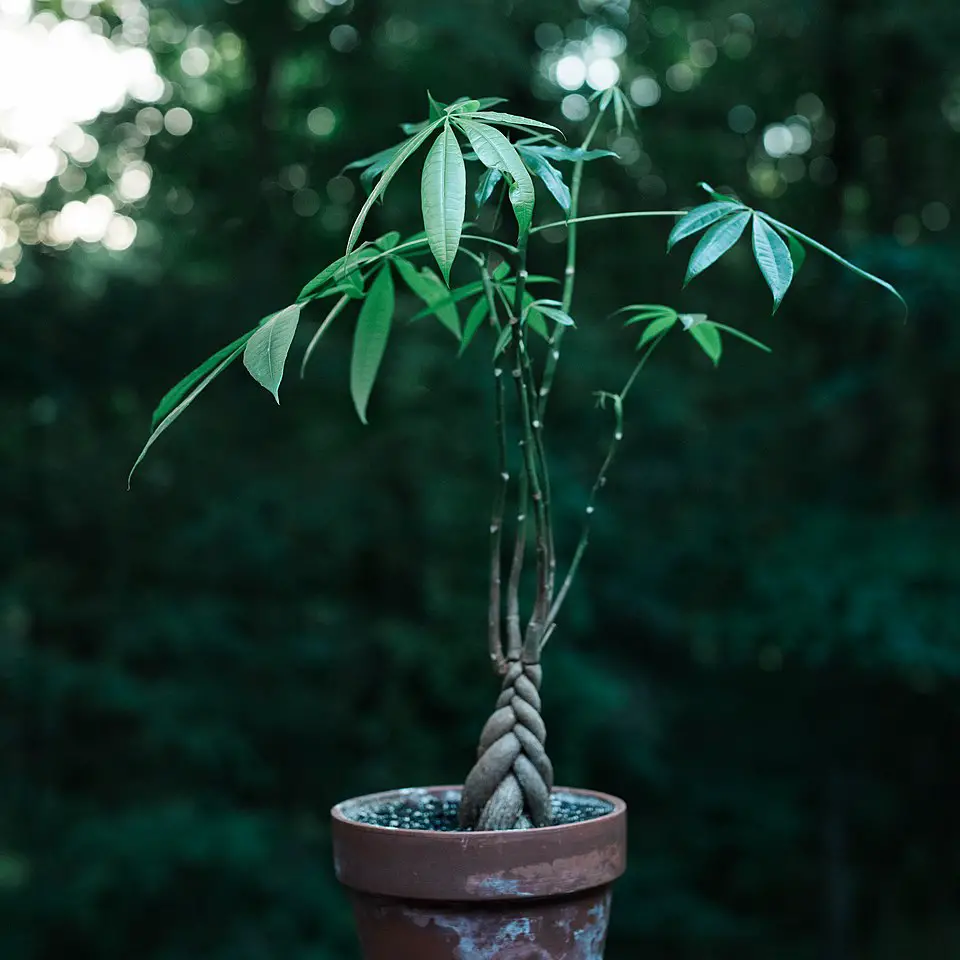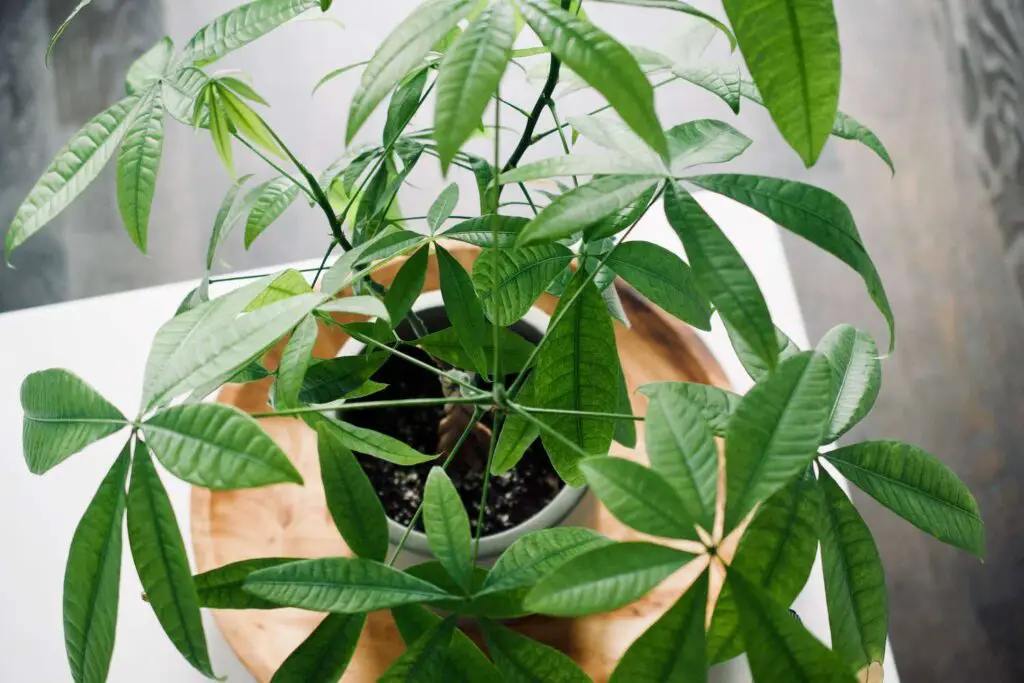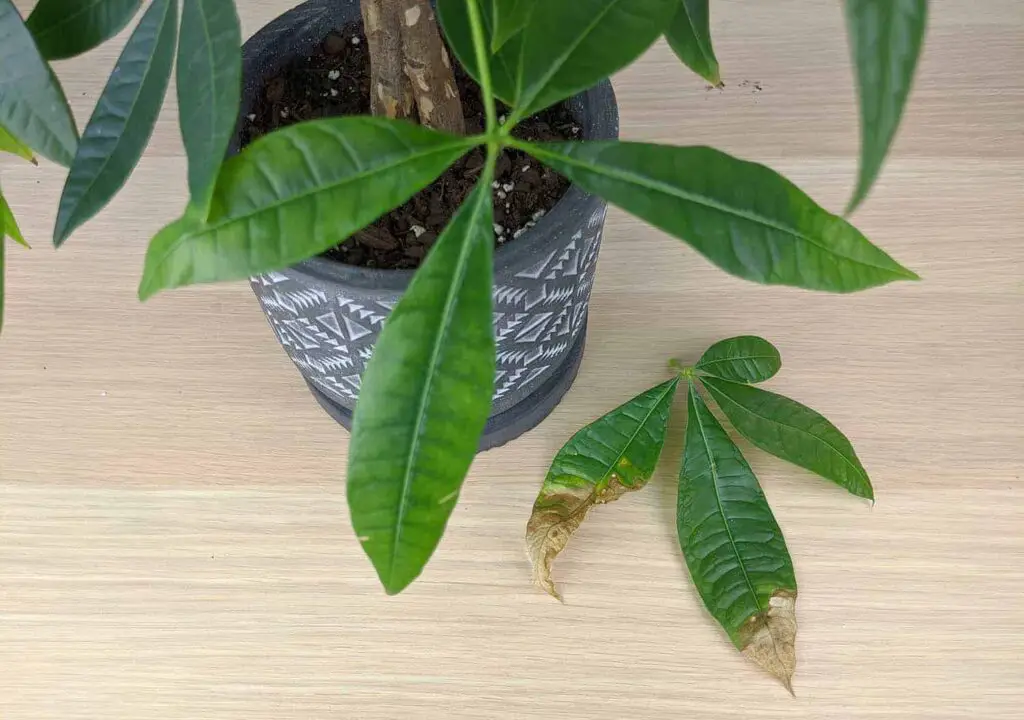To maintain the unique colors of a variegated money tree, provide bright, indirect light and ensure proper watering. Use well-draining soil and fertilize during the growing season. Monitor humidity and temperature for optimal growth, as these factors influence the plant’s vibrant patterns.
Understanding Variegated Money Trees
The variegated money tree, or Pachira aquatica, is popular for its unique leaf patterns and striking appearance. This plant features green leaves with creamy-white or yellow variegation. The combination of colors adds visual interest to any indoor space. Variegation occurs due to genetic mutations, which makes these plants special and sought after.

Originating from Central and South America, the money tree is often associated with good luck and prosperity in various cultures. This belief has contributed to its popularity as a houseplant. Besides its aesthetic appeal, the money tree is relatively easy to care for, making it an excellent choice for both novice and experienced plant enthusiasts.
However, keeping the vibrant colors of a variegated money tree requires specific care techniques. Factors such as light exposure, watering practices, and humidity levels play significant roles in maintaining the plant’s health and color. Understanding these key elements will help you nurture your money tree effectively.
Light Requirements
Light is one of the most critical factors influencing the variegated money tree’s coloration. These plants thrive in bright, indirect light. Direct sunlight can scorch their leaves, while inadequate light can lead to loss of variegation. Here are some tips for providing the right lighting:

- Place your money tree near a window that receives filtered light.
- Rotate the plant regularly to ensure even growth and color development.
- If natural light is limited, consider using grow lights to supplement.
Watering Practices
Proper watering is essential for the health of your variegated money tree. These plants prefer a watering schedule that allows the soil to dry out between waterings. Overwatering can lead to root rot and other issues that affect color vibrancy. Follow these guidelines for effective watering:
- Water when the top inch of soil feels dry to the touch.
- Ensure pots have drainage holes to prevent excess moisture.
- During winter months, reduce watering frequency as plant growth slows down.
Soil Type
Choosing the right soil is crucial for maintaining the vibrant colors of your money tree. A well-draining potting mix helps prevent water retention, which can lead to root issues. Consider using a mix designed for tropical plants or creating your own blend with the following components:
- Potting soil
- Pearlite or sand for aeration
- Organic compost to provide nutrients
Temperature and Humidity
The ideal temperature range for a variegated money tree is between 60°F and 75°F (15°C to 24°C). It is essential to avoid exposing this plant to drafts or sudden temperature changes. Additionally, humidity plays a vital role in keeping foliage healthy and vibrant:

- Aim for humidity levels between 40% and 60%.
- Consider using a humidifier or placing a tray of water near the plant to increase moisture in the air.
- Misting the leaves occasionally can also help boost humidity levels.
Nutrient Needs
To support healthy growth and vibrant colors, regular fertilization is necessary during the growing season. Use a balanced, water-soluble fertilizer every 4-6 weeks from spring through summer. This practice will provide essential nutrients that encourage lush foliage and maintain variegation.
| Nutrient | Function |
|---|---|
| Nitrogen | Promotes lush green growth. |
| Phosphorus | Encourages root development and flowering. |
| Potassium | Supports overall plant health and resilience. |
Pest and Disease Management
Protecting your variegated money tree from pests and diseases is essential for maintaining its health and vibrant colors. Common issues can arise from inadequate care or environmental stressors. Identifying and addressing these problems early can prevent significant damage to your plant.
Common Pests
Several pests may affect your money tree, including:
- Spider Mites: Tiny arachnids that thrive in dry conditions. Look for fine webbing on leaves.
- Mealybugs: White, cottony pests that cluster on stems and leaf joints.
- Scale Insects: Small, brownish pests that attach to the plant’s surface, appearing as bumps.
- Aphids: Small, green or black insects that suck sap from new growth.
Signs of Infestation
It is crucial to monitor your plant regularly for signs of pest infestations. Early detection can make treatments more effective. Watch for:

- Discoloration or yellowing of leaves.
- Leaves dropping prematurely.
- Stunted growth or wilting.
- Sticky residue on leaves (honeydew) indicating aphid presence.
Treatment Options
If you notice any of the above signs, consider these treatment methods:
- Insecticidal Soap: Apply a diluted solution to affected areas. This option is safe for most plants and effective against many pests.
- Neem Oil: A natural pesticide that disrupts the life cycle of pests. Mix with water and spray on the plant.
- Manual Removal: For small infestations, use a damp cloth or cotton swab to wipe away visible pests.
Environmental Stress Factors
In addition to pests, several environmental stressors can impact the health and coloration of your variegated money tree. Recognizing these factors is vital for effective care.
Temperature Fluctuations
Extreme temperature changes can cause stress to your money tree. Sudden drops or spikes in temperature can lead to leaf drop or discoloration. Make sure to:
- Avoid placing your plant near heating vents or air conditioning units.
- Keeps it away from drafty windows during colder months.
- Maintain a stable indoor temperature within the ideal range.
Humidity Levels
Low humidity can lead to crispy leaf edges and dull coloration. To increase humidity levels around your plant, consider the following methods:
- Use a pebble tray filled with water under the pot. This will help increase moisture in the air.
- Mist the leaves with water several times a week, especially in dry seasons.
- Group plants together to create a microenvironment with higher humidity.
Pruning for Health and Appearance
Regular pruning helps maintain the shape of your variegated money tree and encourages new growth. Pruning can also help remove any damaged or diseased foliage, promoting overall plant health.
When to Prune
The best time to prune your money tree is during the growing season, typically in spring and summer. This allows the plant to recover quickly from cuts. However, you can remove any dead or unhealthy leaves at any time throughout the year.
Pruning Techniques
To ensure effective pruning, follow these techniques:
- Use Clean Tools: Always use sterilized scissors or pruning shears to avoid introducing diseases.
- Aim for Balance: Trim back excessive growth to create a balanced shape without over-pruning one side.
- Remove Yellow Leaves: Cut away any yellowing or browning leaves to redirect energy to healthier foliage.
Repotting Your Money Tree
As your variegated money tree grows, it may become root-bound. Repotting helps provide fresh soil and more space for root development, supporting continued growth and color retention. Here are some key points to consider when repotting:
When to Repot
Signs that it may be time to repot include:
- The roots growing out of the drainage holes.
- Water not absorbing quickly enough in the soil.
- A noticeable decrease in growth or vigor.
How to Repot
Follow these steps for a successful repotting process:
l> Propagating your variegated money tree can be a rewarding way to expand your indoor garden or share plants with friends. There are several methods for propagation, each with its unique advantages. The most common propagation techniques for money trees include stem cuttings and air layering. Stem cuttings are a straightforward method for propagating your money tree. This method involves taking a healthy section of the stem and encouraging it to develop roots. Follow these steps for successful propagation through stem cuttings: Air layering is another effective method for propagating money trees, especially for larger specimens. This technique encourages roots to form while still attached to the parent plant. Here’s how to do it: Even with proper care, variegated money trees may face some common issues. Identifying these problems early can help you implement solutions and keep your plant healthy and vibrant. If you notice leaves turning yellow or brown, this can indicate several issues: If your money tree is not growing as expected, consider these factors: T he care needs of your variegated money tree can change with the seasons. Understanding how to adjust care routines will help maintain its health and variegation throughout the year. During the growing season, your money tree will require more attention to support its active growth: The colder months require different care strategies to help your money tree survive: In addition to the care practices outlined in previous sections, there are further strategies you can implement to ensure that your variegated money tree remains healthy and vibrant. These tips can enhance its growth and preserve its unique coloration. The placement of your variegated money tree in your home is crucial. Consider the following when selecting a location: Even with regular fertilization, nutrient deficiencies can occur. Here are some signs to watch for and what they may indicate: The variegated patterns on your money tree are what make it unique. To encourage and maintain these striking colors, keep these points in mind: As yo ur variegated money tree matures, it may require special attention to continue flourishing. Older plants can have different needs compared to younger ones: Caring for a variegated money tree involves understanding its specific needs and providing the right conditions for growth. By maintaining proper light exposure, watering routines, humidity levels, and nutrient availability, you can ensure that your plant thrives and showcases its beautiful colors. Regular monitoring for pests and environmental stressors, along with thoughtful propagation methods, will further enhance your experience as a plant caregiver. The journey of growing a variegated money tree not only enriches your indoor space but also brings joy and satisfaction. With time and attention, your money tree can become a stunning centerpiece in your home, continually rewarding you with its unique and vibrant foliage.Propagation Methods for Variegated Money Trees
Stem Cuttings
Air Layering
Common Problems and Solutions
Leaf Discoloration
Slow Growth
Caring for Variegated Money Trees During Different Seasons
Spring and Summer Care
Fall and Winter Care
Additional Tips for Thriving Variegated Money Trees
Choosing the Right Location
Monitoring for Nutrient Deficiencies
Encouraging Variegation
Caring for Older Money Trees
Conclusion
